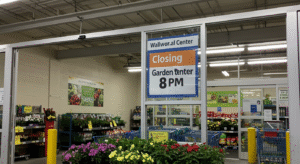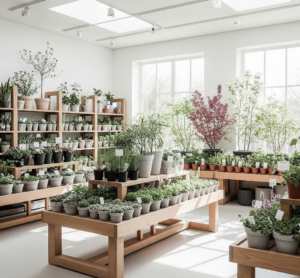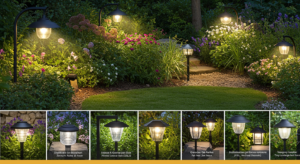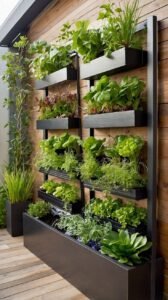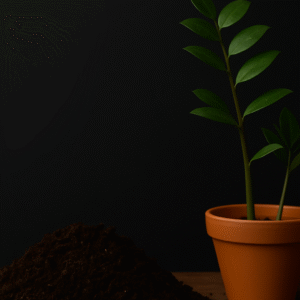How To Outdoor Garden

outdoor garden
Humans perceive gardening as a hobby, far more than what meets the eye. It is an avenue to coexist with nature and a way of life. Cultivating an outdoor garden soothes the mind and soul, and here is everything you need to know to have a spectacular garden that nurtures your well-being. These skills will give you confidence in growing your green, idealistic region.
Choosing the Right Area For the Garden
The success of an outdoor garden largely relies on its location. Plant growth is ideal in places with sufficient sunlight, good soil, and appropriate drainage. First and foremost, it is essential to analyze the available outdoor spaces and check which ones get adequate sunlight. All vegetables and flowers typically take at least 6 hours of direct sunlight daily, so having a sunny spot is vital. If the space is partially shady, consider ferns or leafy greens for plant options with lower light requirements. The soil and nutrients are crucial, too. After rainfall, it is best to avoid areas with standing water, as this excess moisture can lead to root rot. Raised beds or containers would work well if your ground retains too much water. Accessibility is another factor to keep in mind. Contiguity to a water source makes irrigation easier, and placing the garden where it can be seen frequently will encourage consistent care and attention.

Identification of Soil and Ground Preparation
The garden begins with soil as its basic unit, and comprehending the components of soil assists in understanding how to grow plants. The three classified types of soils are sandy, clay, and loamy. Sandy soil is drained of water and cannot sustain nutrients, whereas clay retains a considerable amount of water but often gets compacted. Loamy soil is a combination of sand silt and clay in appropriate amounts; hence, it serves the purpose of most plants. Various tests, such as checks on pH and nutrient levels, must be conducted to understand the type of soil and amendments required fully. The soil’s balance of acidity and alkalinity can be modified using natural supplements. Soil structure can be enhanced using compost and aged manures or organic matter. The soil structure must be loosened using a garden fork or tiller to penetrate roots and nutrients quickly. Removing debris, such as dead plants and weeds, aids the plants in harnessing the nutrients they need without having to fight for them. Raised garden beds, which are elevated planting areas, are a good option for areas with poor soil quality or drainage issues. They come pre-filled with soils and compost of rich nutrient content, making them ideal for growing various plants.
Choosing the Right Plants
Plant selection based on your climate zone and gardening aim is crucial. Some plants do best in heat, while others grow better in cold conditions. Understanding where your zone is helps narrow down the options. If you are starting, try growing simple vegetables like lettuce, tomatoes, beans, and radishes. Herbs such as basil, mint, and rosemary are also easy to grow and add flavor to many dishes. Flowers increase the garden’s beauty and attract helpful insects and other wildlife. Marigolds, zinnias, and petunias are challenging and help colorful outdoor spaces. Companion planting, a technique where different plants are grown together to enhance each other’s growth, helps increase the benefits of different plants grown together, improves pest control, and may increase growth rate. An example is basil and tomatoes, where basil enhances the flavor and helps keep insects away. If you want to follow sustainable gardening practices, go for perennials that return yearly because they do not need replanting.
Fundamental Gardening Tools And Equipment
Having the right tools can make gardening a more enjoyable and efficient experience. A glove will protect your hands from thorns, while a trowel will help you dig the perfect hole for your plants. Pruning shears are essential for maintaining the health of your plants by removing dead or overgrown branches. A garden hose or watering can is a must for ensuring your plants get enough water. A rake and hoe are handy for leveling the soil and dealing with weeds in larger gardens. Investing in quality tools can save you time and effort in the long run. Regular cleaning and sharpening of the blades will keep your tools in top condition for all your gardening needs.
Best Practices and Planting Techniques
You can proceed with the actual planting step with your plants and tools ready. Keeping tags or following instructions on seed packets is essential, as every plant has unique spacing and depth requirements. Crushing or placing plants too closely together can lead to limited airflow, raising the potential for disease. Correct depth while planting seeds is critical for successful germination. Generally, seeds need to be buried at a depth ranging between two to three times their size. Immediate watering right after planting assists the seeds to settle in the soil properly. Gently handling seedlings, along with careful measures to retain their roots, helps to prevent transplant shock. Applying mulch around plants aids moisture retention and weed suppression, resulting in better growth.
Watering, Fertilizing & Plant Care
Every plant needs water to survive, but it can suffer if overwatered. The optimal method of watering is infrequent yet deep watering to promote root growth. Watering should ideally be done either early or late afternoon to ensure the plants can effectively absorb moisture. Checking soil before watering ensures the plants get the proper amount of water because watering is needed if the top inch of soil is dry. Fertilizing is essential to ensure that plants are well looked after, as it gives them the required nutrients. The organic options of compost, fish emulsion, or manure are excellent chemical substitutes when deciding what fertilizer to use. Nutrients in the soil provide an abundant supply of nutrients over a prolonged period and for gradual release. Give special attention to the signs of stunted plant growth as they need withheld nutrients. Apart from nutrients, pest control is another crucial step in plant care. Leaving aphids, snails, or caterpillars unchecked can lead to severe plant damage. Natural solutions, including neem oil and bringing in beneficial insects such as ladybugs, can aid in controlling pests. Regularly checking up on the plants and getting rid of diseased leaves helps stop the spread of infection.
How to Take Care of and Expand Your Garden
Maintenance becomes an ongoing task after the initial setup of your garden. To keep your outdoor garden healthy year-round, cover plants in winter to protect them from frost and add summer mulch to retain moisture. Weeding plugs allow for the prevention of competition between crops and unwanted plants. Regular pruning of dead branches helps remove excess growth while improving health and allowing for future healthy growth. The most seamless way to expand your garden is to create raised beds, experiment with vertical gardening, or add more plants as they want. Changing crops each season aids in preventing soil depletion and reducing the chances of any pests being established. Gardeners are encouraged to try new techniques, such as composting, fruit tree-growing, hydroponics, or even advanced methods, as confidence and experience accumulate and, of course, over time.
Conclusion
With some planning, anyone can reap the benefits of outdoor gardening. Choosing a good site, preparing the soil, picking the right plants, and regularly caring for them create a successful garden. While outdoor gardening requires time and perseverance to cultivate and learn through experience, its benefits- a serene environment filled with beautiful flowers, fresh vegetables, and peace -make it an incredibly worthwhile endeavor. Whether starting with a couple of potted plants or fancy a full-scale vegetative, it’s important to partake in nature’s glory. So, put on your gardening gloves and get growing!
